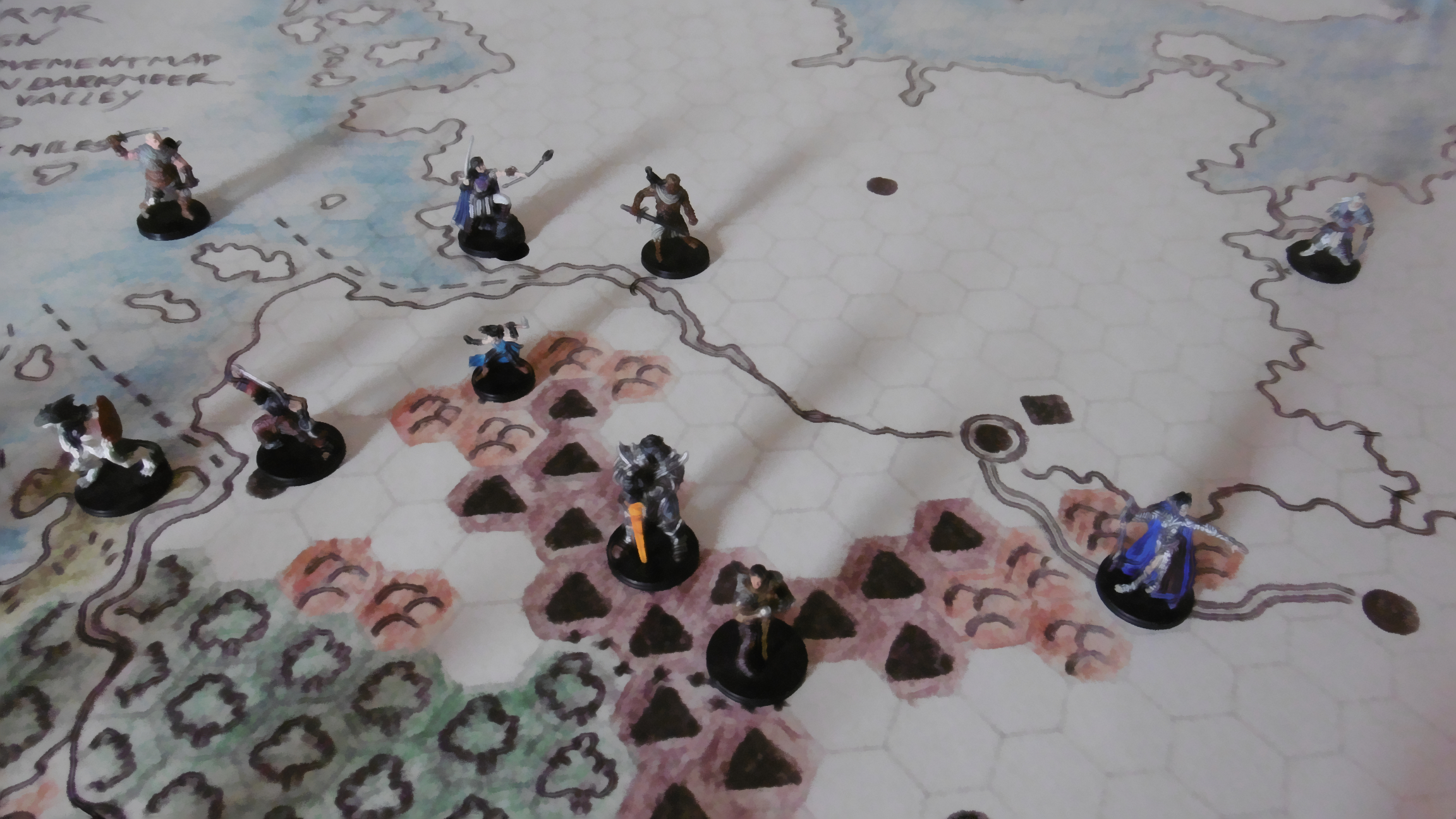Strategic Movement
This is the second of five articles, which discuss strategic movement in the Valormr Campaign.
- Strategic Movement (Introduction)
- Overland Travel
- Waterborne Transport
- Terrain Effects
- Weather
Move Rates
Move rates are expressed as a number of points, one point equaling one mile. The points given here are for one day of travel. A unit spends these points to move into a hex.
| Force Type | Move Points |
|---|---|
| Ground Troops | |
| Infantry | 12 |
| Cavalry | 24 |
| Special | |
| Courrier* | 48 |
| Waterborne Transport† | |
| Galley | 18/72**‡ |
| Longship | 18/90**‡ |
| River Boat | 36 |
| Sailing Ship | 90‡ |
|
Troop Transport |
72‡ |
|
* A lone rider; includes such individuals as spies and scouts. |
|
Daily Rest: One period (or two half periods) of rest is required to recover full daily move points. At the end of the first half period of rest, half daily move points are recovered. A force may rest and move in half periods, that is, rest-move-rest-move, for up to two periods, before requiring two consecutive half periods of rest or be fatigued.
Weekly Rest: A unit can move up to six consecutive days. It must rest one full day of every seven.
Forced March: A unit may take an additional 50% of its daily move points, thereby moving half again as far. The unit must rest the following day or be fatigued.
Fatigued: A fatigued unit subtracts 25% from its daily move points (drop fractions). If the unit becomes engaged in battle, it is fatigued as per Chainmail (11). If it then performs combat actions that would normally make it fatigued, the effects are doubled. A fatigued unit must rest one full day to recover from the effects.

Ground Troops
Humanoid Creatures
Infantry: Humanoids who march in formation are classed as infantry. Humans, orcs, elves, halfolk, gnolls, goblins, etc. all move at the same daily rate.
Cavalry: The only cavalry in the campaign are dwarven boar riders, orc rhino riders (both giant), and a single company of horsed mercenaries from far eastern lands.
Cavalry-Grade Horses
The campaign takes place in the early iron age on the DONJON LANDS time line. Horses in the region are not yet bred large enough to bear the weight of an armored rider and of the temperament required to do so in battle—our exercise of Chainmail’s Jousting rules notwithstanding.
Individual Fantastic Creatures
For creatures which do not move in formation, find the number of miles they travel per day in your favorite source.1 Convert miles, one for one, to movement points. Best to round up or down to the nearest multiple of six.
Special
Courier: Any commander figure can send a courier, which is assumed to be a lone rider. A courier costs no points. Its movement is tracked on the strategic map. A courier may move through and stop in a hex occupied by any friendly figure. A courier passing through an enemy occupied hex escapes on a dice roll of 4 or more. Stopping in such a hex requires a dice roll of 6 to avoid capture. A courier may be transported aboard a waterborne vessel but may not take a horse on a river boat.
Nocturnal Movement
Many fantastic creatures, including gnolls and lizard men, see in the dark as well as light (Chainmail, 43). These creatures may move and attack at night, resting during daylight hours. Often, they rather move at night to gain advantage over light-sighted enemies. Goblins, kobolds, and orcs, who suffer in sunlight, always choose nocturnal activity.
Light-sighted creatures, such as humans, may move on the strategic map during the night with the following limitations:
- Cost: The cost is twice normal move points per hex and per any river crossing operation.
- Terrain: Permitted only into clear terrain hexes or on a road into any terrain hex.
Notes
1 For move rates in the Valormr Campaign I use B/X so to align with Wyrmwyrd.
Pingback: Valormr: Rules for Strategic Map Campaigns – DONJON LANDS